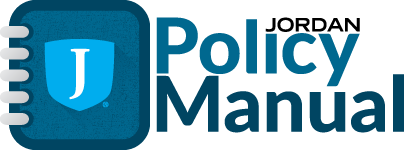Effective - 09/25/2012
Revision - 5/23/17
Reviewed - 9/22/2015
The Superintendent will not cause or allow conditions, procedures, or decisions, which interfere with student achievement or which are unsafe, undignified, inequitable, discriminatory, or unnecessarily intrusive in his/her interactions with students and their families or those enrolling to be students.
Further, without limiting the scope of the aforementioned statement, he/she will not:
- Fail to implement policies, procedures and practices which promote the health and safety of the students.
- Fail to implement policies, procedures and practices that welcome and encourage parents to participate in their child’s education.
- Fail to be considerate of and sensitive to racial, ethnic, and cultural issues as well as community values.
- Fail to establish with students and their families, in a timely manner, a clear understanding of what may be expected and what may not be expected from Jordan School District services.
- Fail to operate facilities with appropriate accessibility.
- Use application forms that elicit information for which there is no clear necessity.
- Use methods for collecting reviewing, transmitting, or storing student and family information that fail to protect against improper access to the material elicited. Privacy shall be protected by strict use of best practices and in compliance with all legal requirements.
- Fail to have clear accountability measures in fundraising activities that require the participation of students.
- Fail to inform students and their families of this policy in a timely manner, or to provide a way to be heard for persons who believe they have not been accorded a reasonable interpretation of their protections under this policy.
- Fail to provide for effective handling of grievances in a timely manner.
